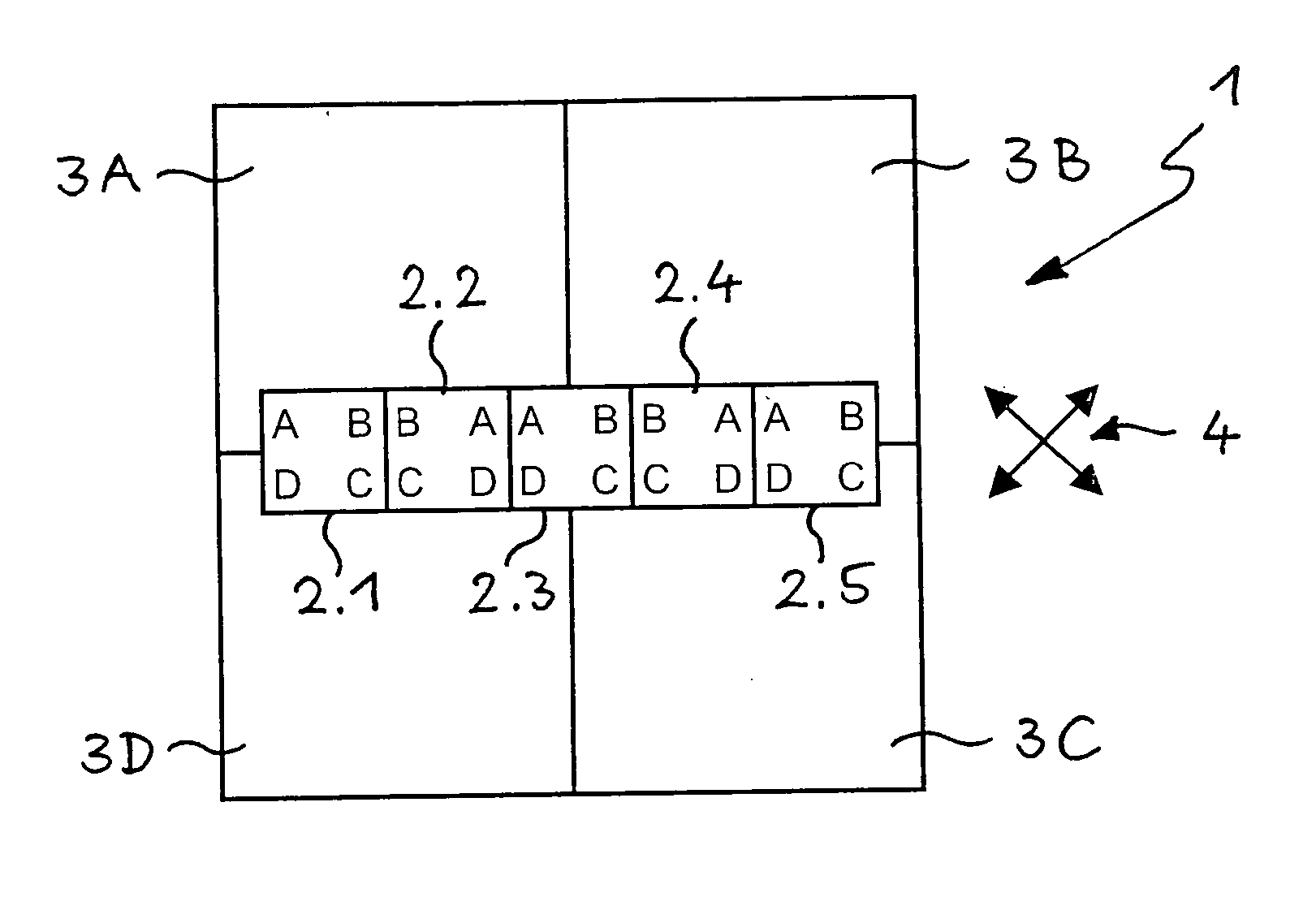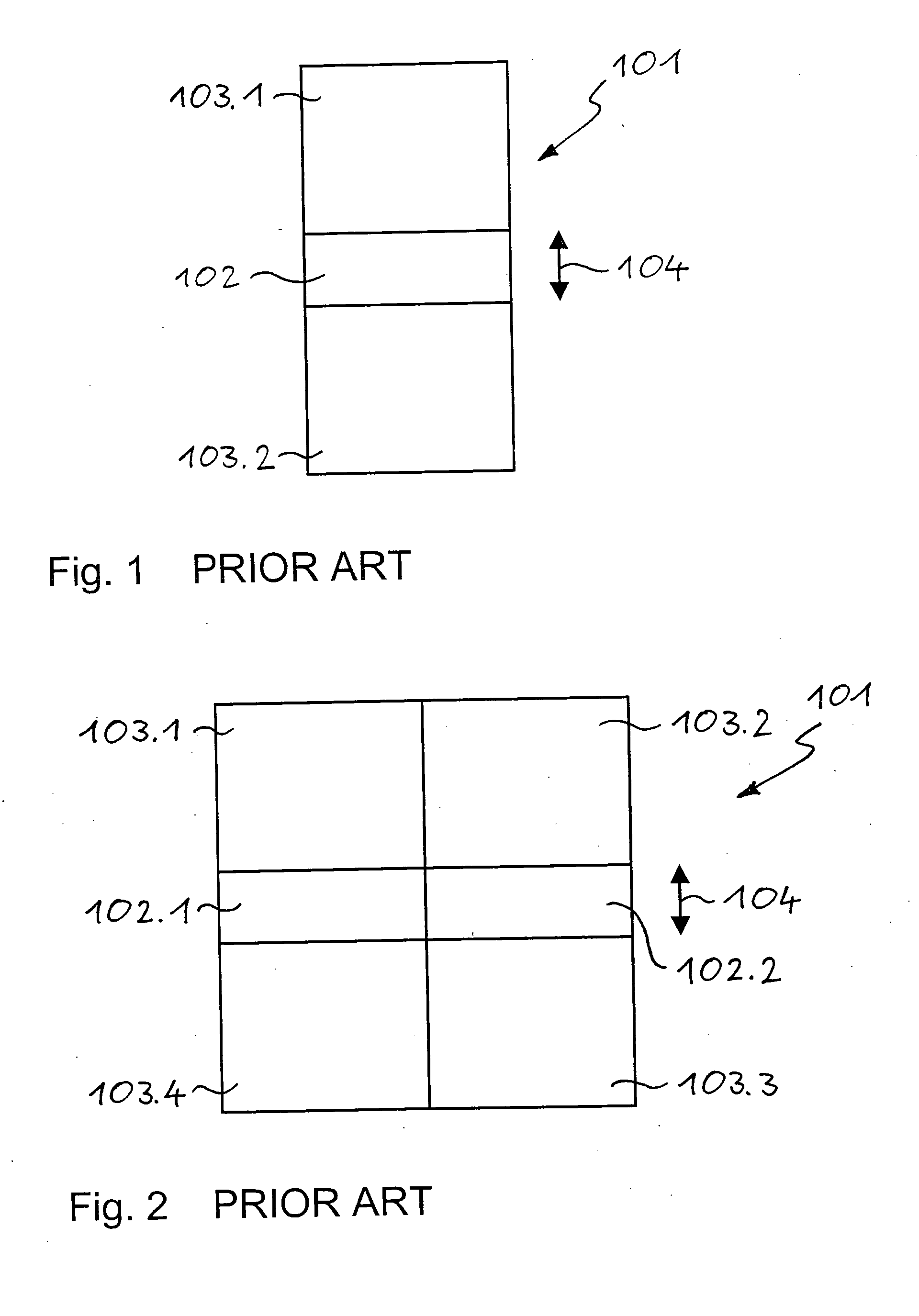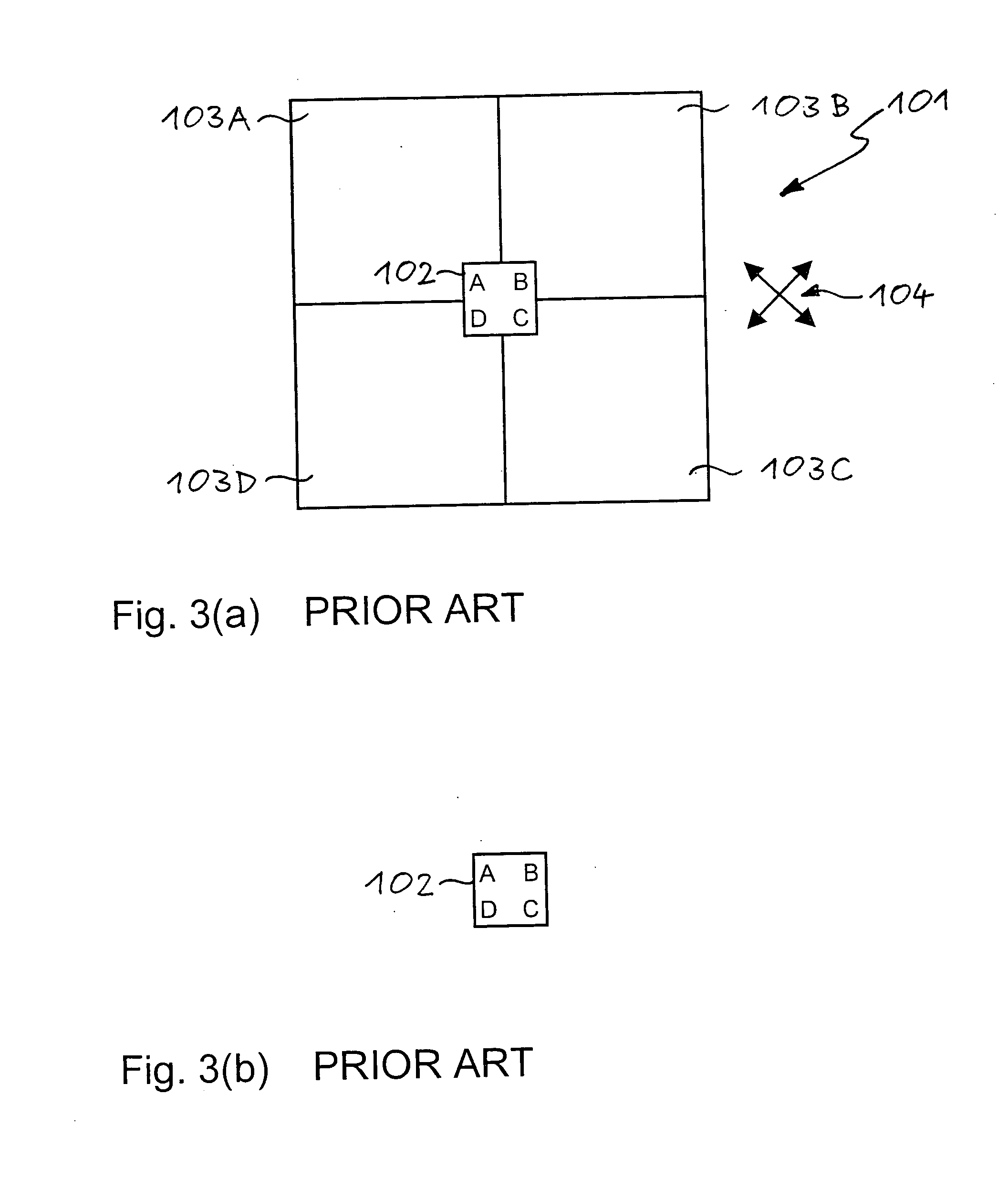Highly sensitive, fast pixel for use in an image sensor
- Summary
- Abstract
- Description
- Claims
- Application Information
AI Technical Summary
Benefits of technology
Problems solved by technology
Method used
Image
Examples
first embodiment
[0032] a pixel 1 according to the invention is depicted in FIG. 4. Five small-sized photo-sensitive areas 2.1-2.5 of rectangular or square shape are placed in a row. They are all interlinked to the four storage sites 3A-3D by appropriate transfer means for transferring the charge carriers to a common storage site, e.g., 3D. The storages sites 3A-3D and the output electronics are shared by all five small-sized photo-sensitive areas 2.1-2.5 of the pixel 1. Already here, an increase of both fill-factor and demodulation frequency is recognized when comparing the pixel arrangement with the prior-art pixel architecture of FIG. 3.
second embodiment
[0033]FIG. 5 illustrates the pixel 1 according to the invention. Several, e.g., nine, small-sized photo-sensitive areas 2.1-2.9 form a cross-like area on the pixel 1. The number of storage sites 3A-3D is four again.
[0034]FIG. 6 shows a pixel 1 with a two-dimensional array of, e.g., 3×3=9 small-sized photo-sensitive areas 2.1-2.9, delivering four samples each to a selected one, e.g., 3D, of four storage areas 3A-3D.
[0035] It is possible to design pixels 1 according to the invention with a plurality of photo-sensitive areas 2.1-2.6 delivering three samples. Such an embodiment is sketched in FIG. 7, where six small-sized photo-sensitive elements 2.1-2.6 transfer their charge carriers to a selected one of three common storage sites (not shown).
[0036] Preferred photo-sensitive elements 2, 2′ that allow controlling the transfer of photo-generated electrons to different storage sites are depicted in FIGS. 8 and 9, respectively. The invention is, however, not limited to these two presente...
PUM
 Login to View More
Login to View More Abstract
Description
Claims
Application Information
 Login to View More
Login to View More - R&D
- Intellectual Property
- Life Sciences
- Materials
- Tech Scout
- Unparalleled Data Quality
- Higher Quality Content
- 60% Fewer Hallucinations
Browse by: Latest US Patents, China's latest patents, Technical Efficacy Thesaurus, Application Domain, Technology Topic, Popular Technical Reports.
© 2025 PatSnap. All rights reserved.Legal|Privacy policy|Modern Slavery Act Transparency Statement|Sitemap|About US| Contact US: help@patsnap.com



